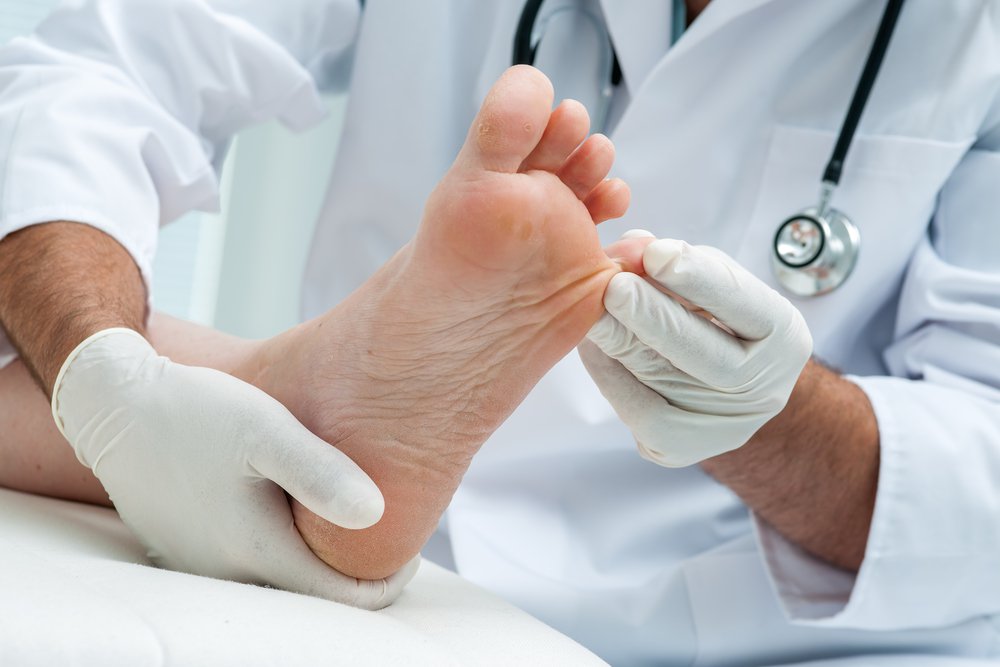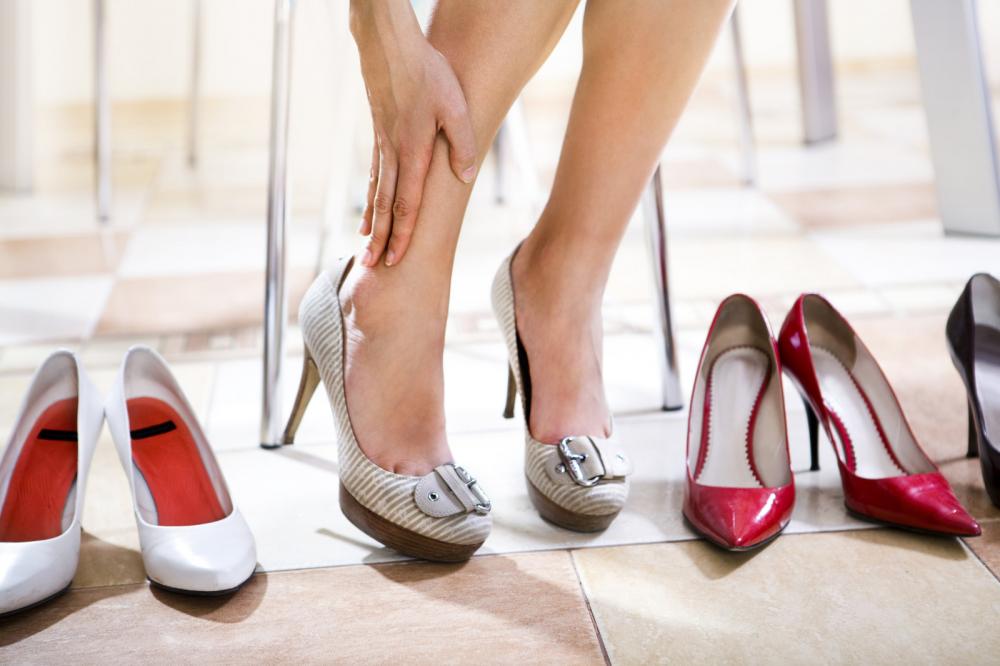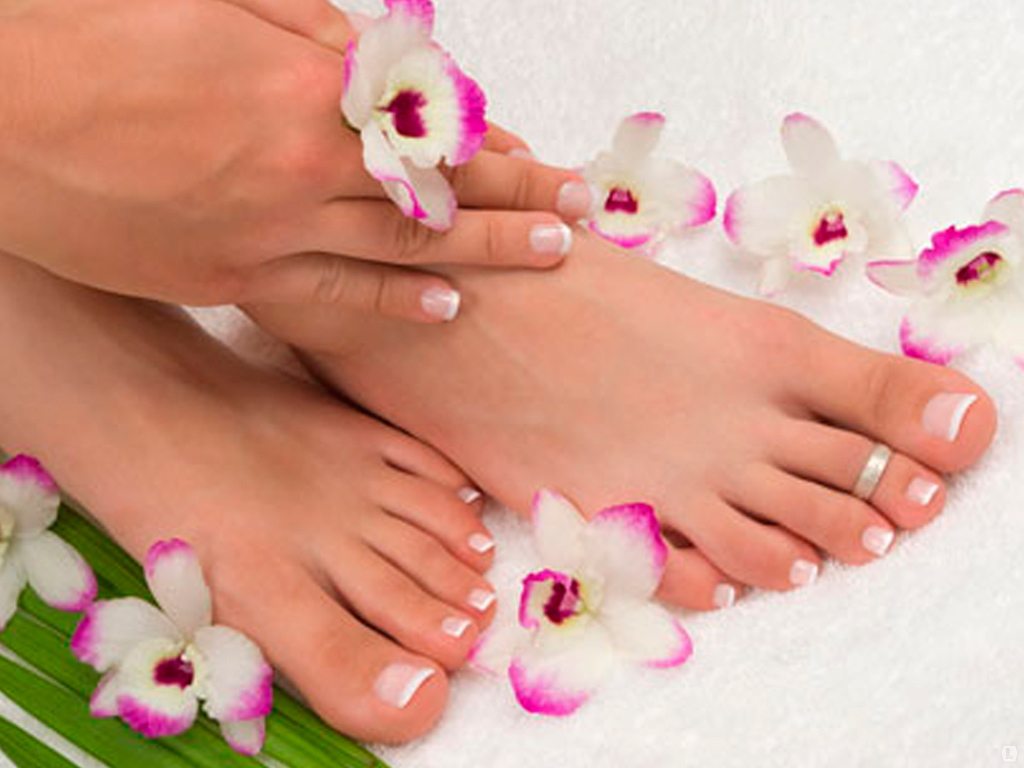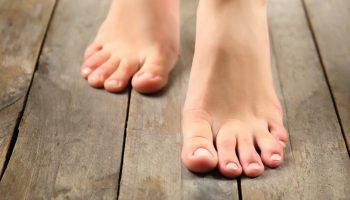
Diabetes mellitus (DM) represents several diseases in which high blood glucose levels over time can damage the nerves, kidneys, eyes, and blood vessels. Diabetes can also decrease the body’s ability to fight infection. When diabetes is not well controlled, damage to the organs and impairment of the immune system is likely. Foot problems commonly develop in people with diabetes and can quickly become serious.
People with diabetes often have altered sensation in their feet and therefore if they have cracked nails as well it will lead to decreased ability to feel pain, heat or cold. This can result in injury and a delay in getting care for an injury. An injury can lead to a foot ulcer that can become infected. It often takes a long time for an ulcer to heal. Among diabetics changes often take place in the walls of blood vessels. This change leads to the thickening of the walls that makes the blood vessels stiff. This may lead to decreased circulation in the lower legs and feet. This is important because it reduces the body’s ability to heal an injury or fight an infection. Complications of foot injuries can lead to amputation.
It is important to control your blood sugar and blood pressure to maintain your health and prevent complications. Also, the key to maintaining healthy feet is to prevent injury by following a plan to check and care for your feet. The following are some measures to assist you in preventing foot problems.
Daily Foot Care Guide:
- Inspect your feet daily. Check for cuts, blisters, redness, swelling, or nail problems. Use a magnifying hand mirror to look at the bottom of your feet. Call your doctor if you notice anything. (If your eyesight is poor, have someone else do it for you.)
- Wash your feet every day using mild soap and warm water. Check the water temperature with your hand or elbow before placing your feet in the water.
- Dry your feet well. Make sure to dry in between the toes.

- If there are any signs of infection such as swelling, redness, drainage, fever, or chills consult your doctor immediately.
- Keep toenails neatly trimmed. Cut the nails according to the shape of your toes so they are even with the skin on the end of your toes. Avoid cutting down into the corners. Never cut skin at the end of your toes. Make sure you trim your toenails in proper light. Trim toenails only after soaking feet, for example, after a bath or shower. If your toenails are thickened, you may have to have them trimmed by a doctor. If you have trouble with your eyesight then have someone help you trim your toenails.
- Report signs of ingrown toenails: redness, drainage, and swelling.
- Avoid the wrong type of socks. Avoid tight elastic bands (they reduce circulation). Don’t wear thick or bulky socks (they can fit poorly and irritate the skin). Wear clean, dry socks, and change them daily.
- Do not try to cut off corns or calluses. If you have corns or calluses, inform your doctor during your next visit. Wearing soft socks and well-fitted shoes can prevent corns or calluses.

- Shake out your shoes and inspect the inside before wearing. Remember, you may not feel a pebble—so always shake out your shoes before putting them on.
- Never walk barefoot. Not even at home! You could step on something and get a scratch or cut.
- Get periodic foot exams. See your foot and ankle surgeon on a regular basis for an examination to help prevent the foot complications of diabetes.
- Exercise: Regular exercise will improve bone and joint health in your feet and legs, improve circulation to your legs, and will also help to stabilize your blood sugar levels. Consult your physician prior to beginning any exercise program.
- Diabetes control: Following a reasonable diet, taking your medications, checking your blood sugar regularly, exercising regularly, and maintaining good communication with your physician are essential in keeping your diabetes under control. Consistent long-term blood sugar control to near normal levels can greatly lower the risk of damage to your nerves, kidneys, eyes, and blood vessels.
Suggestions To Prevent Injury

- Avoid extreme temperatures. Do not let feet remain wet. Protect your feet from sunlight by using a sunscreen.
- Do not apply heating pad or hot water bottle to feet. Do not cross legs. Avoid smoking as it constricts blood vessels hence reducing blood circulation to your legs and feet.
- Every time you visit your doctor ask him to check your feet.
- If you have a problem with your feed consult your doctor immediately.
- If the level of your blood sugar has increased then consult your doctor immediately and this could be a sign of infection.
Disclaimer
The Content is not intended to be a substitute for professional medical advice, diagnosis, or treatment. Always seek the advice of your physician or other qualified health provider with any questions you may have regarding a medical condition.

